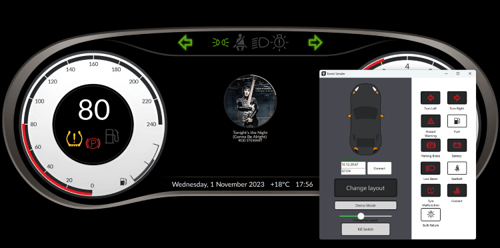Qt for MCUs – A perfect development platform for the fitness industry
March 02, 2021 by rogermazzella | Comments
Historically, the fitness industry has been extremely commoditized, especially in the cardiovascular equipment space. The main cardiovascular products [treadmill, upright stationary bike, recumbent stationary bike, and elliptical machine] have minor differences among the different product brands. For example, a treadmill is made up of a deck, deck cushioning, belt, motor, uprights with handrails, heartrate monitor, tray, “Deadman’s switch” key clip, power switch with cord, and console. These parts are considered “table stakes” meaning every treadmill, regardless of brand, has them.
There are certainly areas of differentiation outside of the console including motor-type, deck cushioning, and handrail design to name a few. The biggest differentiator among the brands is the console. Outside of the console, there is no single differentiator or combination of differentiators which will result in one cardiovascular product brand’s cost of goods (COG) to be significantly different than another cardiovascular product brand’s COG. Keep in mind that each brand has different cardiovascular product portfolios (i.e., budget, standard, and premium or home and commercial, etc.) which drive price differentiation; however, within these portfolios’ categories, COGs need to be similar across the brands in order to be price competitive in the market. In other words, outside these minor differences in features, major cardiovascular products are very similar across the different brands. Maintaining an overall lower COG drives a company, and their brand, towards being the price leader.
With the console as the major point of differentiation, and all other differentiators being minor, the focus of numerous fitness equipment brands is on the console design and overall user experience. Additionally, the console on the cardiovascular equipment is one of the most expensive COG ticket items. An optimal user experience, driven by the console, needs to be both modern and state-of-the art at the lowest possible cost. Fitness equipment manufacturers constantly look to drive innovation through the console while, at the same time, attempt to drive the COG down. The lower the COG, the more price competitive one brand can be against the others while maximizing already razor-thin profit margins. It goes without saying that modern, state-of-the-art, and innovative doesn’t come without a price tag. The problem is how does a company develop modern, state-of the-art, and innovative exerciser user experiences while at the same time minimizing their COG? The answer is Qt for MCU.
Qt for MCUs is a complete graphics framework and toolkit with everything you need to design, develop, and deploy GUIs on MCUs. Run your application on bare metal or a real-time operating system. With Qt for MCU, you can develop smartphone-like user experiences with code you can reuse across various MCU and MPU chipsets on your operating system of choice. Are you developing a companion app to compliment the console user experience? Reuse the code to develop across any mobile platform on any mobile operating system.
Code once, deploy anywhere. Learn more about Qt for MCU here and see how Qt for MCU can empower you to develop beautiful, modern, responsive, and reliable user interfaces and user experiences on low-cost chipsets and hardware.
Blog Topics:
Comments
Subscribe to our newsletter
Subscribe Newsletter
Try Qt 6.7 Now!
Download the latest release here: www.qt.io/download.
Qt 6.7 focuses on the expansion of supported platforms and industry standards. This makes code written with Qt more sustainable and brings more value in Qt as a long-term investment.
We're Hiring
Check out all our open positions here and follow us on Instagram to see what it's like to be #QtPeople.



